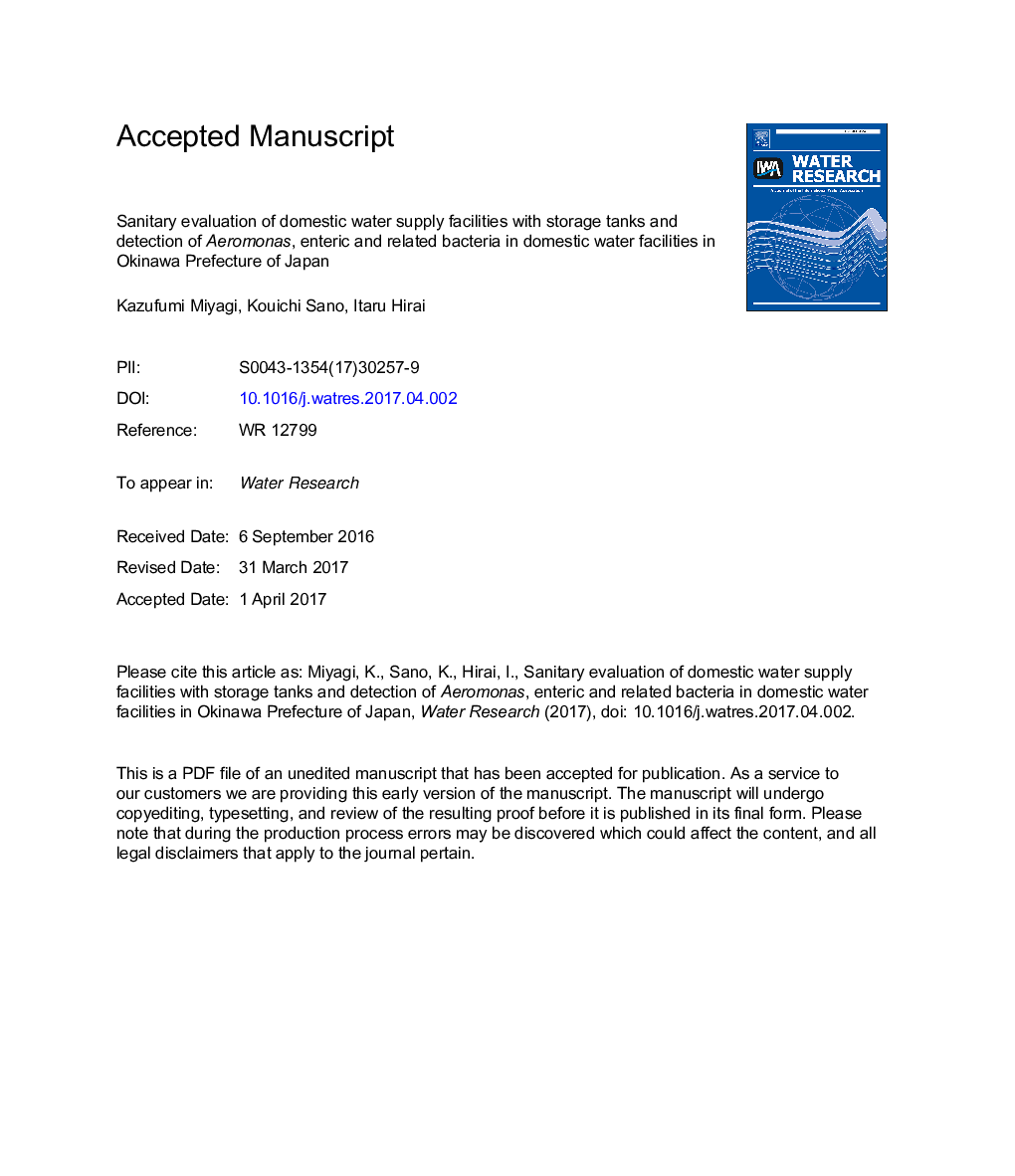| Article ID | Journal | Published Year | Pages | File Type |
|---|---|---|---|---|
| 5759007 | Water Research | 2017 | 35 Pages |
Abstract
Water from the water storage systems was reported to be consumed directly without boiling in 22 of the 54 houses (40.7%). 31 of the sampled houses had installed water storage tanks of more than 1 cubic meter (m3) per inhabitant, and in 21 of the sampled houses, the tank had never been cleaned. In all samples, the total viable count and fecal coliforms did not exceed quality levels prescribed by Japanese waterworks law. Although the quantity of bacteria detected was not high, 23 NF-GNR, 14 Enterobacteriaceae and 5 Aeromonas were isolated in 42.6%, 7.4% and 3.7% of samples respectively. One isolated A. hydrophila and four A. caviae possessed various putative virulence factors, especially A. hydrophila which had diverse putative pathogenic genes such as aer, hlyA, act, alt, ast, ser, and dam. Many bacteria were isolated when the concentration of residual chlorine was below 0.1 mg/l and the water temperature was above 20 °C. These results suggest that elevated water temperature and mismatch between tank size and water demand lead to loss of residual chlorine in tap water. Therefore, to minimize growth of aquatic bacteria such as Aeromonas spp. and Pseudomonas spp., we recommend that an appropriate size tank and/or volume of stored water is always used, and also suggest installation of some means of reducing water temperature such as shading.
Keywords
Related Topics
Physical Sciences and Engineering
Earth and Planetary Sciences
Earth-Surface Processes
Authors
Kazufumi Miyagi, Kouichi Sano, Itaru Hirai,
